Introduction to Generative AI
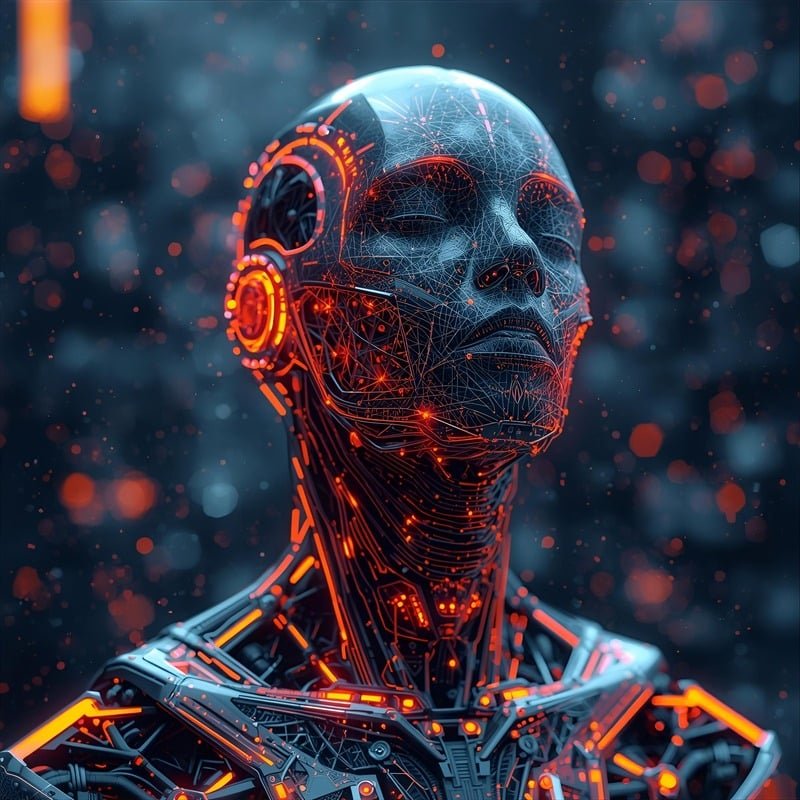
What is Generative AI?
Generative AI is one of the most revolutionary advancements in technology, transforming how we create, communicate, and interact with digital content. Unlike traditional AI systems that follow predefined rules or perform narrow tasks, generative AI goes a step further—it creates new content. Whether it’s writing an article, painting a portrait, composing music, or designing a video game character, generative AI is capable of producing something entirely new that mimics human creativity.
At its core, generative AI uses machine learning models trained on massive datasets. These models learn patterns, structures, and relationships within the data, allowing them to generate fresh outputs that resemble the original input but are not mere copies. Imagine having an assistant who has read every book in the library, listened to every piece of music, and studied every painting—then uses that knowledge to create something unique. That’s essentially how generative AI works, blending learned knowledge with innovative outputs.
This ability to produce original work has sparked a massive wave of excitement, curiosity, and debate. Is AI simply mimicking creativity, or is it actually creative? Can AI-generated work truly hold the same emotional and cultural value as human-made creations? These questions form the foundation of ongoing discussions in both technological and creative industries.
A Brief History of Generative AI Development
The concept of machines generating content is not entirely new. Early AI researchers in the 1960s experimented with computer-generated poetry and music, though these outputs were often simplistic and mechanical. The real breakthrough came with the development of deep learning in the 2010s, which allowed AI to process vast amounts of data and learn more complex patterns.
Generative Adversarial Networks (GANs), introduced in 2014, marked a turning point. GANs work by having two neural networks compete with each other—one generating content and the other evaluating it—pushing the system toward increasingly realistic outputs. This led to advancements in AI-generated art, photorealistic images, and even fake videos, often referred to as “deepfakes.”
The emergence of transformer-based models, like OpenAI’s GPT series, further accelerated the rise of generative AI. These models made it possible for machines to produce highly coherent text, sparking the creation of ChatGPT. Meanwhile, diffusion models like those used by MidJourney revolutionized digital art, enabling the generation of stunning, detailed visuals.
In just a decade, generative AI evolved from a niche research project to a mainstream technology, accessible to anyone with an internet connection.
Why Generative AI is Different from Traditional AI
Traditional AI systems are built to follow structured logic: they recognize patterns, classify data, or make predictions based on predefined inputs. For example, a traditional AI can detect whether an image contains a cat or a dog, but it won’t be able to create an entirely new image of a cat playing a guitar in the style of Picasso. That’s where generative AI stands apart.
Generative AI doesn’t just analyze data—it learns from it and produces new outputs that didn’t exist before. This leap from recognition to creation is what makes it groundbreaking. Instead of being confined to problem-solving, generative AI acts as a collaborator, capable of enhancing human creativity and efficiency.
For instance, while a traditional AI in healthcare might predict the likelihood of a disease, a generative AI can help design new drugs or simulate medical scenarios. In entertainment, rather than just recommending movies, it can generate scripts or even create new characters. This transformative capability is why generative AI is not just another technological buzzword—it’s a paradigm shift.
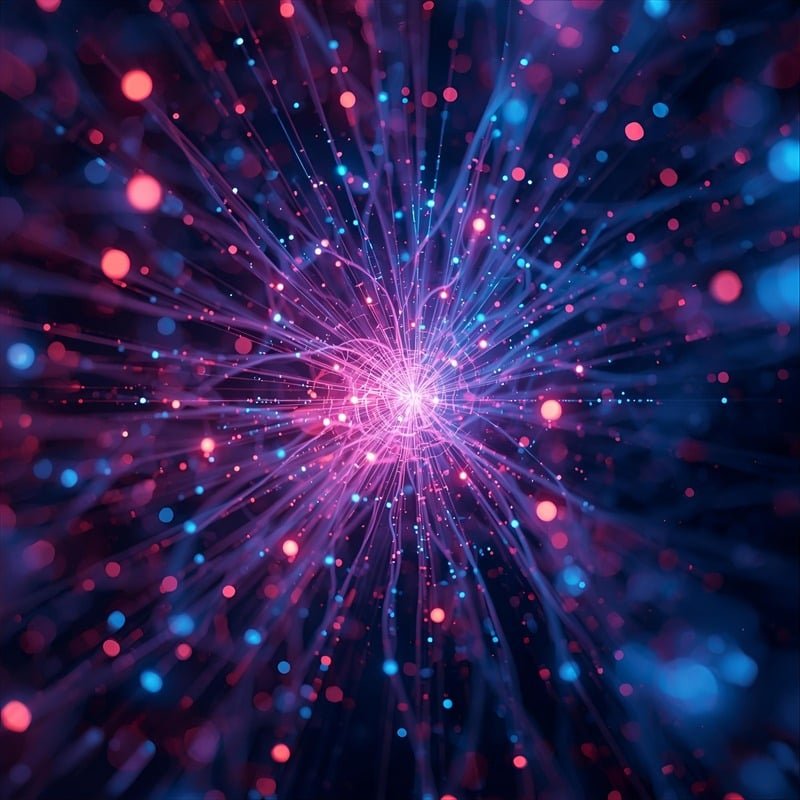
The Evolution of ChatGPT and MidJourney
ChatGPT: From Language Models to Conversational AI
ChatGPT is arguably one of the most recognized faces of generative AI. Built on OpenAI’s GPT (Generative Pre-trained Transformer) architecture, ChatGPT was designed to understand and generate human-like language. Initially, language models were used for tasks like translation or summarization, but GPT took things further by generating coherent, contextually relevant responses to user prompts.
The power of ChatGPT lies in its training. By analyzing billions of words from books, articles, websites, and conversations, it learned grammar, tone, style, and nuance. This allowed it to not just answer questions, but also engage in conversations that feel remarkably natural.
From assisting students with homework to helping professionals draft reports or creative writers brainstorm story ideas, ChatGPT quickly found its way into multiple industries. Its accessibility played a big role in popularizing generative AI—suddenly, anyone with an internet connection could interact with an advanced AI, no technical background required.
But ChatGPT’s evolution didn’t stop at casual conversation. With advancements in reinforcement learning and human feedback, newer versions became more reliable, safer, and aligned with human intentions. Enterprises began integrating ChatGPT into customer service, education, healthcare, and even law. What once seemed like science fiction—an AI you can talk to like a friend—has now become part of daily life.
MidJourney: Pioneering AI in Digital Art
While ChatGPT dominated the world of words, MidJourney took the art world by storm. Launched as an independent research lab, MidJourney created a text-to-image AI system that allows users to turn written prompts into stunning visuals. Within seconds, a phrase like “a futuristic city floating in the clouds” can be transformed into a detailed, imaginative image.
What makes MidJourney stand out is its artistic flair. While other image generators like DALL·E focused on realism, MidJourney carved its niche in producing visually striking, almost surreal images that often resemble works of fine art. Designers, marketers, and creatives began flocking to the platform, using it for everything from concept art to advertising campaigns.
The democratization of art creation is one of MidJourney’s most profound impacts. People who may not have the skills to paint or draw can now bring their visions to life through AI. This has sparked debates around authorship, creativity, and the role of human artists, but it has also opened doors for innovation and collaboration.
The Impact of These Tools on Public Awareness of AI
Before ChatGPT and MidJourney, AI was often viewed as a complex technology confined to tech companies, research labs, and sci-fi movies. These tools changed that narrative entirely. They brought generative AI into the mainstream, making it accessible, interactive, and fun.
Millions of people started experimenting with prompts, exploring what AI could create, and sharing their results online. Social media feeds became flooded with AI-generated poems, artworks, and conversations, sparking global curiosity and dialogue. Generative AI was no longer just for developers—it became a cultural phenomenon.
Perhaps the most important contribution of ChatGPT and MidJourney was humanizing AI. They transformed AI from a mysterious back-end technology into a tangible experience people could engage with directly. This shift not only accelerated adoption but also ignited discussions around ethics, creativity, and the future of work.
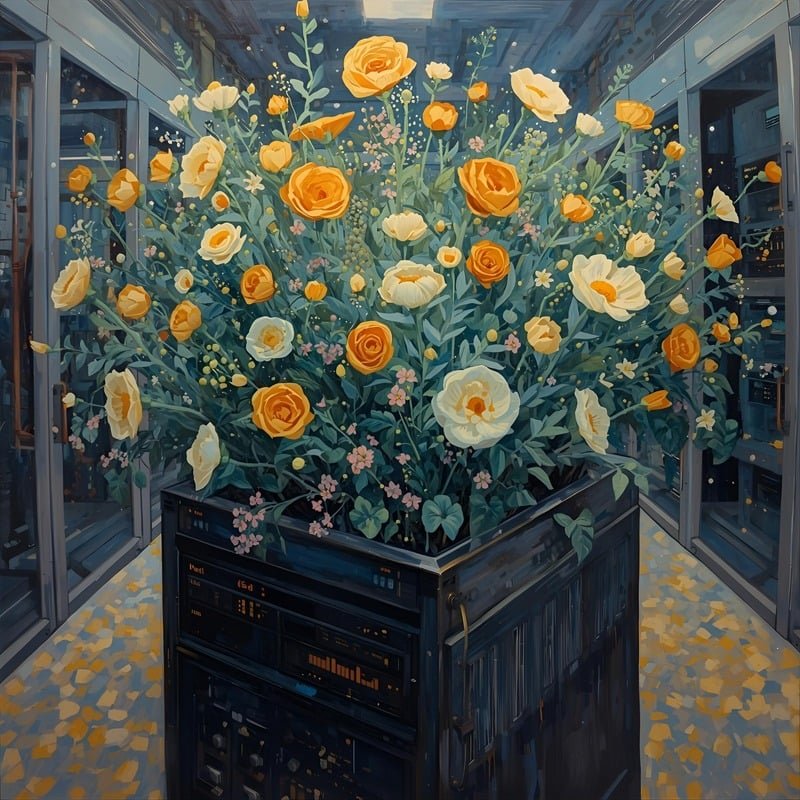
Beyond the Popular Names: Other Generative AI Tools
Generative AI in Video Creation
While ChatGPT dominates text and MidJourney excels in images, generative AI is also making waves in video production. Tools like Runway, Synthesia, and Pika Labs are enabling creators to generate videos from simple prompts or scripts. Imagine writing a short scene and instantly seeing it come to life as an animated or live-action video—this is no longer a futuristic dream but a present reality.
Video AI is proving especially useful for marketers, educators, and content creators who need quick, cost-effective video production. Instead of hiring actors, renting studios, and spending weeks editing, AI can create professional-looking videos in hours. This is a game-changer for small businesses and independent creators who previously couldn’t afford large-scale production.
But the impact goes beyond convenience. Generative video tools are also advancing industries like film and gaming. Studios can use AI for pre-visualization, helping directors experiment with different scenes before filming. Game developers can create dynamic storylines and environments that evolve in real-time, offering players immersive, personalized experiences.
The rise of AI in video is reshaping not just how we create, but how we consume content. As AI-generated movies, ads, and tutorials become more common, audiences may begin to wonder: can we always tell what’s real and what’s AI-made?
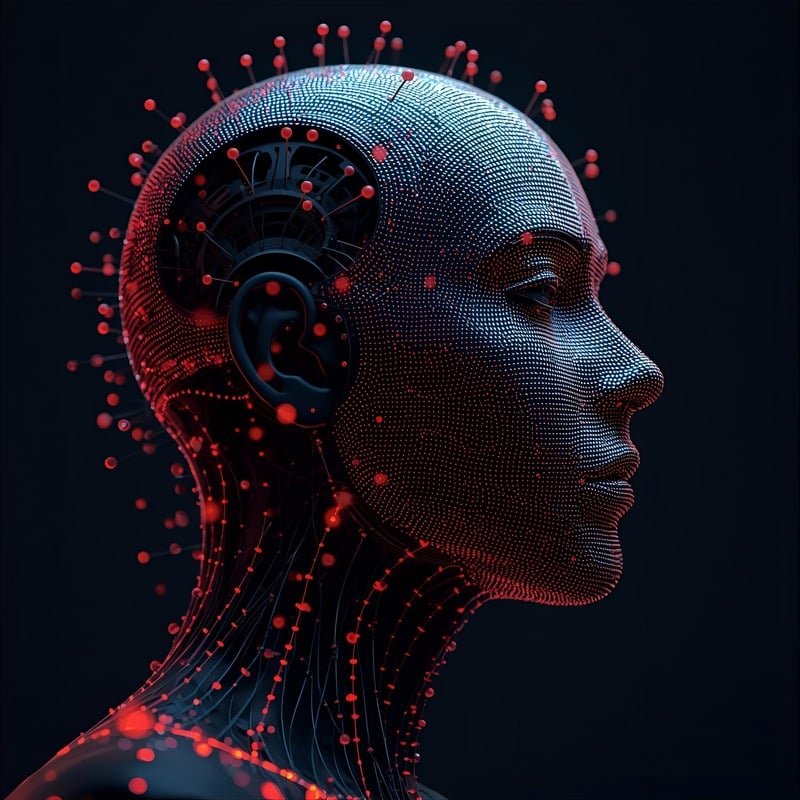
How Generative AI Works Under the Hood
Large Language Models (LLMs)
At the heart of text-based generative AI tools like ChatGPT are Large Language Models (LLMs). These models are trained on enormous datasets containing books, articles, websites, and even code. Using transformer architecture, LLMs learn the relationships between words, enabling them to generate human-like text that flows naturally.
LLMs work by predicting the next word in a sequence based on the context of previous words. Over time, with billions of examples, they develop an astonishing ability to mimic human writing styles and respond intelligently across different topics.
But what makes LLMs truly powerful is their adaptability. They can shift tones, write in different voices, and even mimic specific formats like essays, emails, or poetry. This flexibility has made them indispensable for industries ranging from education to law.
Of course, LLMs are not perfect. They sometimes produce “hallucinations”—confident but factually incorrect answers. This limitation has fueled ongoing research to make these systems more accurate and reliable.
How Generative AI Works Under the Hood (Continued)
Diffusion Models and Image Synthesis
While Large Language Models (LLMs) power text-based AI, diffusion models are the magic behind image generation tools like MidJourney and Stable Diffusion. These models work by starting with random noise and gradually refining it into a coherent image based on the user’s input prompt. Think of it like sculpting: the AI begins with a block of marble (the noise) and chisels away, step by step, until a detailed piece of art emerges.
Diffusion models are trained on massive datasets of images paired with descriptions. Through training, they learn associations between words and visual elements. So when you type “a dragon flying over a futuristic city at sunset,” the AI understands how dragons, cities, and sunsets typically look, then merges them into a brand-new visual creation.
The real breakthrough of diffusion models is their ability to produce highly detailed and imaginative results. Unlike older methods that struggled with realism, diffusion models can replicate textures, lighting, and depth in ways that are almost indistinguishable from human-made art. Artists and designers have embraced this technology as both a creative partner and a productivity booster, generating concepts in minutes that would otherwise take hours or days.
But diffusion models also raise critical questions. If an AI is trained on copyrighted images, is the new output truly original, or is it derivative? Should artists receive credit or compensation when their work indirectly influences AI-generated content? These debates highlight the ethical challenges that will continue to evolve as the technology advances.
Reinforcement Learning and Human Feedback
One of the reasons tools like ChatGPT feel so natural in conversation is because of reinforcement learning with human feedback (RLHF). After training on large datasets, AI models are fine-tuned by real people who rank the quality of different responses. Over time, the system learns which kinds of answers are most helpful, polite, and aligned with human expectations.
This human-guided process is what makes conversational AI less robotic and more relatable. For instance, without RLHF, a model might respond factually but without empathy or nuance. With RLHF, it learns to acknowledge emotions, offer clarifications, and even adapt its tone based on context.
Reinforcement learning is also crucial for safety. It helps reduce harmful outputs, misinformation, and biased language. However, no system is perfect. Biases can still slip through, reflecting the imperfections of both the training data and human evaluators. This ongoing challenge makes it clear that AI development is not just a technical problem but also a social and ethical one.
The interplay between large-scale machine training and human oversight will remain at the core of generative AI. It ensures that as these systems grow smarter, they also stay aligned with the values and needs of the people using them.
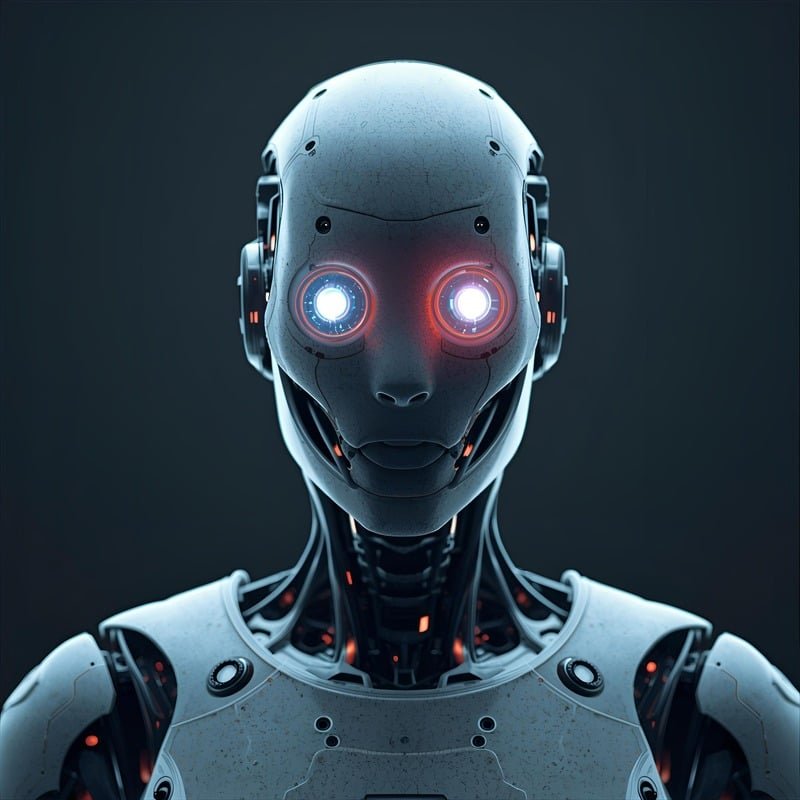
Applications of Generative AI in the Real World
Business and Marketing Applications
Generative AI has quickly become a game-changer for businesses, especially in marketing and customer engagement. Companies are using AI-powered tools to create personalized ad campaigns, generate social media posts, and even write product descriptions. Instead of spending hours brainstorming content, marketing teams can now draft campaigns in minutes, then refine them with human creativity.
One of the biggest advantages is personalization. AI can analyze customer behavior and preferences, then generate targeted messages that resonate with specific audiences. Imagine receiving an ad that feels like it was written just for you—chances are, AI played a role in crafting it.
In addition to content creation, AI is transforming customer support. Chatbots powered by generative AI can handle common queries, provide troubleshooting guidance, and even upsell products. This not only reduces workload for human staff but also ensures customers get instant responses around the clock.
Businesses are also experimenting with AI-driven data analysis. By combining predictive analytics with generative capabilities, companies can simulate market scenarios, forecast trends, and even draft business strategies. It’s like having a digital consultant that never sleeps.
However, businesses must tread carefully. Over-reliance on AI can risk sounding impersonal, and mistakes in AI-generated content can damage brand reputation. The most effective strategies blend AI efficiency with human oversight, ensuring a balance between automation and authenticity.
Education and Research
Generative AI is rapidly reshaping education, offering new ways to teach, learn, and conduct research. For students, tools like ChatGPT act as study companions—explaining complex concepts, generating practice questions, and even offering feedback on essays. Teachers can use AI to create lesson plans, quizzes, and learning materials tailored to different skill levels.
In higher education and research, AI is accelerating discovery. Scientists are using generative AI to sift through massive datasets, draft research summaries, and even generate hypotheses. In fields like biology and chemistry, AI is helping design new molecules and predict how they might behave, cutting down years of trial-and-error research.
But perhaps the most exciting application is personalized learning. Traditional classrooms often struggle to meet the unique needs of every student. AI can analyze a learner’s strengths and weaknesses, then generate customized exercises and explanations. This creates a more inclusive education system where students progress at their own pace.
Of course, challenges exist. Students might misuse AI to complete assignments without learning the material. Teachers worry about plagiarism and the authenticity of AI-assisted work. To address this, educators are beginning to design assignments that encourage critical thinking and collaboration, areas where human insight still outshines AI.
Healthcare and Drug Discovery
In healthcare, generative AI holds life-saving potential. One of its most groundbreaking applications is drug discovery. Traditionally, developing a new drug can take over a decade and billions of dollars. AI can drastically shorten this timeline by generating potential drug compounds and simulating their effects before costly human trials.
AI is also transforming diagnostics. Generative models can analyze medical images, detect abnormalities, and even suggest treatment plans. For example, an AI trained on thousands of X-rays might spot subtle signs of disease that human doctors could miss. While doctors remain the decision-makers, AI acts as a powerful assistant, offering second opinions and reducing diagnostic errors.
Beyond diagnostics and drug design, AI is improving patient care. Generative models can create personalized treatment plans, generate health reports, and even simulate patient outcomes. For mental health, chatbots powered by generative AI are being tested as supportive tools for counseling and therapy.
Still, the stakes in healthcare are high. A wrong suggestion from an AI system can have serious consequences. That’s why rigorous testing, transparency, and regulation are essential before generative AI becomes a standard part of medical practice.
Entertainment and Media Production
The entertainment industry has embraced generative AI with open arms. In film and television, AI is being used to generate scripts, design characters, and even produce visual effects. What once required massive budgets and months of post-production can now be achieved with a fraction of the resources.
In music, generative AI tools like AIVA and Amper Music allow creators to compose original soundtracks in minutes. Independent artists can experiment with different styles, while major studios use AI to generate background scores for films and games.
Gaming, too, is undergoing a revolution. AI-generated storylines, characters, and environments create immersive worlds that adapt to players’ actions. Instead of static narratives, players experience dynamic, evolving stories that feel more personal and engaging.
Perhaps most importantly, generative AI is democratizing creativity. Independent creators who lack access to expensive equipment or teams of specialists can now produce high-quality content. This levels the playing field, allowing fresh voices to enter industries once dominated by big studios.
However, the flood of AI-generated content also raises concerns. If anyone can produce movies, songs, or games at scale, how do we separate genuine creativity from mass-produced content? Audiences may soon need new ways to measure authenticity and artistic value.
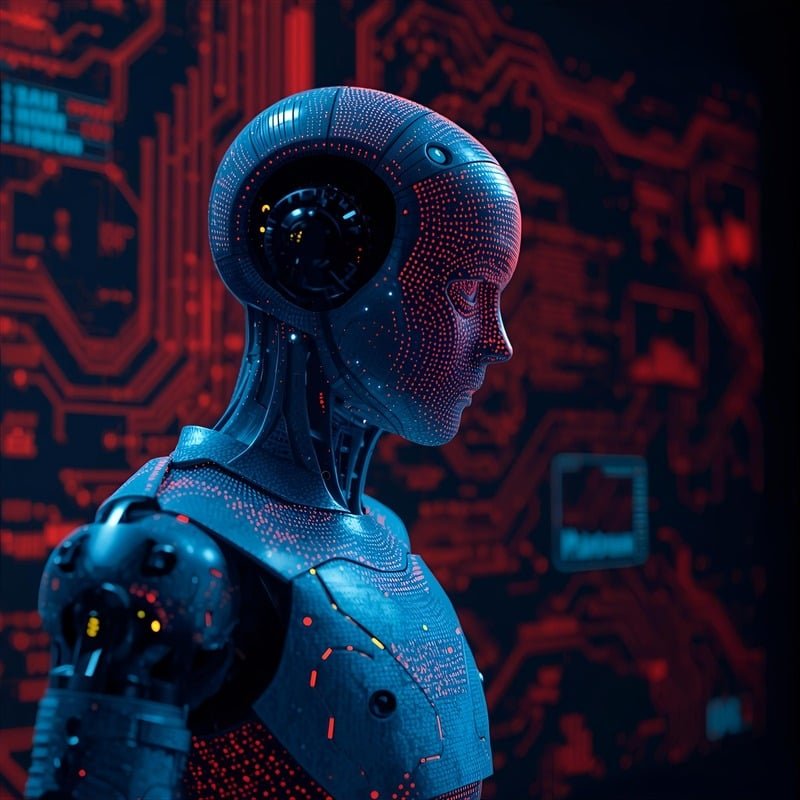
Generative AI in Everyday Life
AI-Powered Personal Assistants
AI assistants are no longer limited to setting alarms or answering basic questions. With generative AI, personal assistants are evolving into full-fledged companions capable of handling complex tasks. Imagine asking your AI assistant not just to schedule a meeting, but to draft the email, prepare the agenda, and even generate a follow-up summary afterward.
These assistants can help manage daily life in countless ways—writing grocery lists, generating workout routines, or even suggesting recipes based on what’s in your fridge. For busy professionals, AI can summarize reports, draft presentations, and organize schedules. For families, it can help plan vacations, suggest learning activities for kids, or provide bedtime stories.
The integration of generative AI into smartphones, smart speakers, and even vehicles means these assistants are becoming ever-present in our lives. Over time, they may become so personalized that they anticipate needs before we even express them.
Of course, this convenience comes with trade-offs. The more data we share with AI assistants, the greater the privacy concerns. Striking a balance between personalization and data security will be key to their widespread acceptance.
Generative AI in Everyday Life (Continued)
Customized Content Generation
One of the most noticeable ways generative AI is seeping into everyday life is through customized content creation. From personalized workout plans to tailored reading recommendations, AI is reshaping how people consume and interact with digital media. Unlike one-size-fits-all solutions, AI uses data from user preferences, habits, and interactions to create experiences that feel uniquely crafted for each individual.
Take social media, for example. Platforms are experimenting with generative AI to create customized posts, captions, and even visual content for users. Instead of manually drafting updates, people can describe the tone or style they want, and AI generates content that matches their personality. Writers are using AI to draft blog posts, poets are generating verses in specific moods, and influencers are producing branded content at scale.
Education platforms are also harnessing this power. Students can request study guides on specific topics, get practice questions aligned with their skill levels, or even receive simplified explanations of complex theories. This personalized approach ensures that no two learners have the same experience, making education more inclusive and adaptable.
Even entertainment is shifting toward customization. Streaming platforms are experimenting with AI-generated recommendations that don’t just suggest what to watch, but could eventually generate new content tailored to niche audience interests. Imagine a short film created just for you, blending your favorite genres, characters, and storytelling styles. That’s the future generative AI is nudging us toward.
The flip side is that excessive personalization risks creating echo chambers. If every piece of content is tailored to an individual’s tastes, they may miss out on diverse perspectives and experiences. Striking the right balance between customization and exploration will determine whether AI enriches our lives or narrows them.
The Role of AI in Social Media
Social media has become a central stage for generative AI. From AI-generated profile pictures and avatars to auto-written captions and hashtags, AI tools are transforming how people present themselves online. Platforms like TikTok and Instagram are flooded with AI-generated art, music, and filters, showcasing how creativity is evolving in the digital age.
Marketers and influencers are among the biggest adopters. AI tools help them generate content faster, test multiple styles, and optimize engagement strategies. For instance, AI can suggest the best times to post, the captions most likely to attract clicks, and even create videos that align with trending topics. This reduces the time and effort required to maintain an active online presence.
But generative AI’s influence on social media isn’t just about convenience—it’s also reshaping culture. Viral AI trends, from deepfake videos to surreal MidJourney images, often spread rapidly, blurring the lines between real and artificial. While this fuels creativity, it also raises concerns about misinformation and authenticity.
Another fascinating shift is how AI is democratizing influence. Previously, content creation required design skills, editing knowledge, or financial resources. Now, anyone with access to generative AI tools can produce high-quality visuals, videos, and posts, leveling the playing field for aspiring creators.
The challenge, however, lies in trust. As audiences grow skeptical of overly polished or AI-generated content, authenticity becomes more valuable than ever. Influencers and brands will need to disclose AI use transparently while finding ways to preserve their human touch.
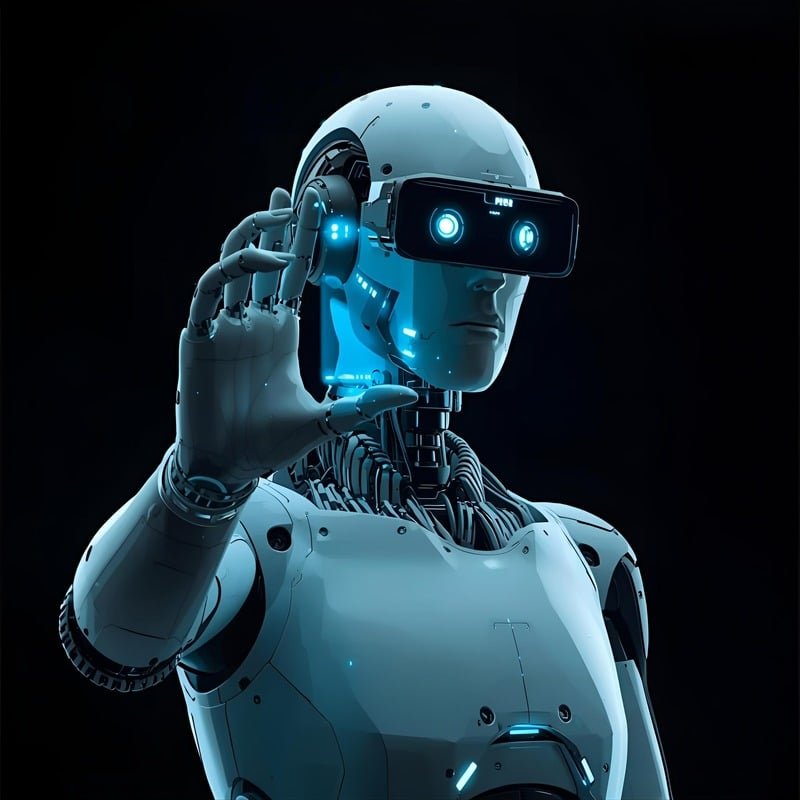
Challenges and Limitations of Generative AI
Bias and Ethical Concerns
Generative AI is only as unbiased as the data it’s trained on—and unfortunately, most datasets contain human biases. This means AI-generated content can sometimes reinforce stereotypes, produce offensive material, or reflect unfair social assumptions. For example, if an image generator is asked to create a picture of a CEO, it might overwhelmingly produce male figures, reflecting biases in the data it was trained on.
These biases pose serious ethical challenges. If left unchecked, AI can perpetuate systemic inequalities and influence decision-making in harmful ways. In hiring tools, biased outputs might disadvantage certain candidates. In education, biased content could shape how subjects are taught and perceived.
Beyond bias, there’s the issue of accountability. When AI generates harmful or misleading content, who is responsible—the developers, the users, or the AI itself? This gray area makes regulation and ethical oversight incredibly complex.
To address these issues, companies are experimenting with bias-mitigation techniques, such as diversifying training datasets and introducing stricter filters. But technology alone isn’t enough. Ethical frameworks, transparency, and public awareness are equally important. Society must play an active role in shaping how AI is developed and used, ensuring that its power benefits everyone fairly.
Copyright and Intellectual Property Issues
One of the hottest debates surrounding generative AI is about ownership. If an AI model creates a painting inspired by thousands of artworks it was trained on, who owns the final product? The user who typed the prompt, the AI company, or the original artists whose work influenced the output?
Copyright law hasn’t caught up with these complexities. In some cases, artists have discovered that AI models replicated distinctive styles eerily close to their own, sparking accusations of plagiarism. Lawsuits are already underway, with creators demanding credit and compensation for their contributions to AI training data.
Businesses also face risks. Using AI-generated content without clarifying its originality can lead to legal disputes. For example, a company might release an AI-generated logo only to find out it closely resembles another brand’s design. This uncertainty forces organizations to tread carefully, balancing innovation with legal compliance.
Some argue that new licensing systems could provide a solution, allowing artists to opt in or out of AI training datasets and receive royalties. Others believe the law must evolve to define AI’s role as a creator more clearly. Until then, copyright and ownership remain among the most pressing challenges in the generative AI landscape.
Accuracy and Reliability Problems
Despite their sophistication, generative AI systems are not always reliable. ChatGPT, for example, is known to produce “hallucinations”—responses that sound convincing but are factually incorrect. Image generators sometimes create distorted or unrealistic outputs, especially with complex prompts.
These inaccuracies can be relatively harmless in casual use but potentially disastrous in professional settings. In healthcare, a mistaken AI suggestion could affect patient treatment. In finance, an inaccurate AI-generated report could lead to costly decisions. This makes human oversight essential whenever AI is applied in high-stakes environments.
Another limitation is context awareness. While AI can generate coherent text, it doesn’t truly “understand” meaning the way humans do. This lack of deep comprehension sometimes leads to outputs that miss subtle nuances, humor, or cultural context.
Improving accuracy requires better training methods, stronger verification processes, and clearer guidelines for users. Until then, generative AI should be viewed as a powerful assistant, not a flawless authority.
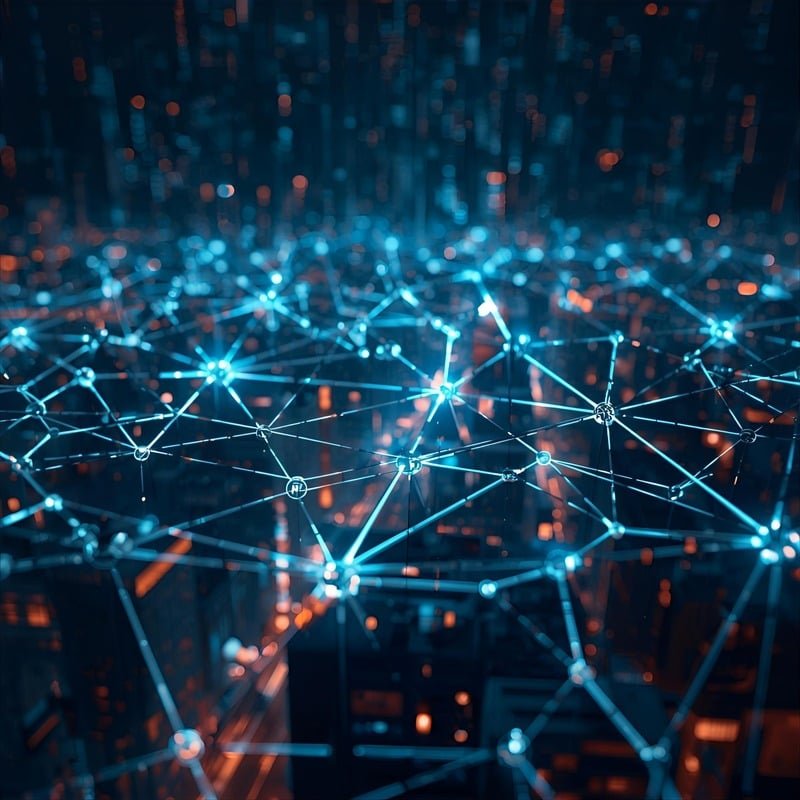
The Debate: Creativity vs. Automation
Can AI Truly Be Creative?
One of the most heated debates about generative AI is whether it can actually be creative. Skeptics argue that AI doesn’t invent—it simply recombines patterns from existing data. In this view, AI isn’t truly “creating” but rather remixing what humans have already made.
Supporters, however, point to AI’s ability to generate original poems, music, and visuals that often surprise even the people who built the systems. If creativity is about producing something new that resonates with others, then AI arguably qualifies as creative.
The truth likely lies somewhere in between. AI doesn’t have emotions, intentions, or lived experiences—the traditional fuel of human creativity. But it can generate fresh ideas and inspire humans to think differently. In this sense, AI may not replace creativity but expand its boundaries, acting as a catalyst for human imagination.
Human and AI Collaboration in the Creative Process
Rather than framing AI as a competitor, many artists see it as a collaborator. A musician might use AI to draft melodies, then refine them with personal touches. A writer could use AI to overcome writer’s block, turning rough drafts into polished stories. Designers are using AI to generate hundreds of variations of concepts, then selecting and enhancing the best ones.
This partnership creates new possibilities. Artists can experiment more freely, businesses can prototype faster, and educators can craft tailored learning materials. Instead of replacing human creativity, AI amplifies it, giving people more tools to express themselves.
However, collaboration also requires boundaries. If humans rely too heavily on AI, they risk diluting their unique voice and perspective. Striking a balance ensures that AI serves as an assistant, not a crutch.
The Future of Work in Creative Industries
Generative AI is already reshaping creative industries, sparking both excitement and fear. On one hand, it lowers barriers to entry, allowing more people to participate in art, writing, music, and design. On the other hand, it threatens traditional roles, raising concerns about job displacement.
For example, graphic designers worry that clients may choose AI tools over hiring professionals. Writers fear being replaced by AI-generated blogs and marketing copy. Musicians question whether AI-generated tracks will overshadow human compositions.
Yet history shows that new technologies rarely eliminate creativity—they transform it. Just as photography didn’t destroy painting, generative AI may not destroy traditional art forms but shift them in new directions. Professionals who embrace AI as a tool rather than resist it may find themselves better positioned in the evolving landscape.
The real challenge will be ensuring fair compensation and recognition for human creators while navigating industries increasingly influenced by AI automation.
The Future of Generative AI
Advancements We Can Expect in the Next Decade
Generative AI has already reshaped how we create and interact with content, but the next decade promises even more groundbreaking advancements. One major shift will be the rise of multimodal AI systems. Unlike today’s models that specialize in text, images, or audio, multimodal AI will seamlessly combine all of these. Imagine asking an AI to write a story, generate illustrations, compose a background score, and even produce a short video—all from a single prompt.
Another area of advancement will be personalization. Future AI systems may understand individuals so deeply that they can anticipate needs, preferences, and emotions with uncanny accuracy. This could transform everything from healthcare (personalized treatment plans) to entertainment (customized shows and music).
We’ll also see more specialized AI models tailored for industries. Instead of general-purpose tools like ChatGPT, there will be domain-specific AIs for law, medicine, engineering, and even niche creative fields. These expert systems will combine the breadth of general AI with the depth of specialized human knowledge.
Hardware and computational improvements will further accelerate progress. As chips and processing methods become more efficient, AI models will grow faster, cheaper, and more environmentally sustainable. This democratization will make powerful generative AI accessible to smaller businesses, schools, and individuals worldwide.
However, with great power comes great responsibility. Future AI won’t just generate content—it could influence elections, shape public opinion, and alter economies. As AI gets more advanced, society will need stronger safeguards to ensure it is used ethically and responsibly.
AI Regulation and Policy Making
The rapid rise of generative AI has outpaced laws and policies, leaving governments scrambling to catch up. In the coming years, regulation will play a crucial role in shaping how AI evolves and integrates into society. Policymakers face tough questions: Who owns AI-generated content? How do we prevent AI from spreading misinformation? What protections should exist for workers affected by automation?
Some countries are already introducing AI-specific regulations, focusing on transparency, accountability, and data privacy. The European Union, for instance, is working on the AI Act, which seeks to establish clear rules for the development and use of AI. Similar efforts are underway in the U.S., China, and other regions.
One key area of regulation will be around training data. Artists, writers, and musicians are demanding the right to control whether their work can be used to train AI systems. Governments may enforce licensing systems or require AI developers to compensate creators fairly.
At the same time, overly strict regulation could stifle innovation. Striking a balance between fostering innovation and protecting society will be one of the defining challenges of the next decade. Collaboration between governments, tech companies, creators, and the public will be essential.
The Role of Open-Source Communities in AI Development
While big tech companies dominate much of the AI landscape, open-source communities are playing a vital role in shaping the future of generative AI. Projects like Stable Diffusion have shown that powerful AI tools don’t have to remain locked behind corporate walls—they can be freely accessible to developers and creators worldwide.
Open-source AI fosters innovation by allowing anyone to build, experiment, and improve upon existing models. This leads to rapid advancements and diverse applications that large corporations might overlook. For example, independent developers have created AI tools for local languages, small businesses, and educational initiatives that would otherwise be ignored.
Moreover, open-source projects encourage transparency. By making code and datasets public, they allow researchers and watchdogs to inspect AI systems for biases, flaws, or ethical concerns. This level of scrutiny helps build trust and pushes the industry toward more responsible practices.
However, open-source AI also comes with risks. Without safeguards, powerful models could be misused for harmful purposes, such as generating deepfakes or disinformation. Balancing openness with responsibility will remain an ongoing challenge.
Ultimately, open-source communities act as a counterbalance to corporate power, ensuring that generative AI remains accessible, diverse, and aligned with public interests. Their role will only grow more important as AI becomes an integral part of daily life.
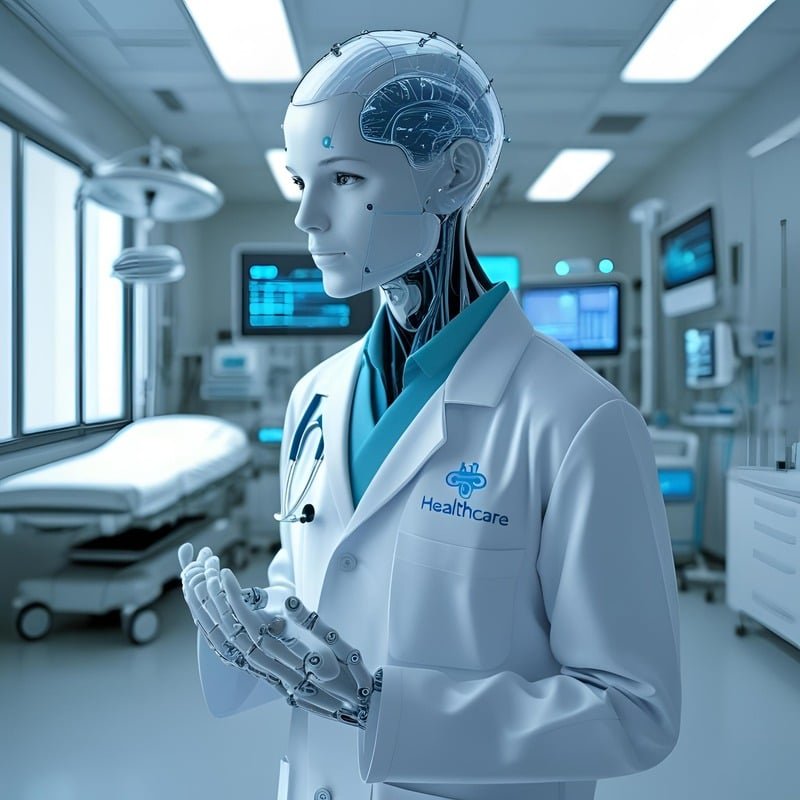
Conclusion
Generative AI is more than just a technological trend—it’s a cultural, economic, and creative revolution. From ChatGPT’s conversational fluency to MidJourney’s breathtaking visuals, AI is pushing the boundaries of what machines can create. But the story doesn’t end with text and images. Video, music, healthcare, education, and countless other industries are being transformed by AI’s generative power.
Yet, with these opportunities come significant challenges. Bias, copyright disputes, misinformation, and job disruption remind us that generative AI is not without risks. The question isn’t whether AI will shape our future—it already is. The real question is how we choose to guide it.
As we stand at the edge of this new frontier, one thing is clear: generative AI won’t replace human creativity, but it will redefine it. Just as past technologies expanded human potential, generative AI will become a collaborator, a tool, and in some ways, a mirror reflecting our collective imagination.
The rise of generative AI is not just about smarter machines—it’s about the future of human expression. And that future is only just beginning.
FAQs
FAQs
How is generative AI different from regular AI?
Regular AI typically analyzes and classifies data—it can recognize patterns or make predictions. Generative AI goes further by creating new content, whether that’s text, images, music, or video.
What industries will benefit the most from generative AI?
Creative industries, marketing, healthcare, education, and entertainment are already seeing major benefits. Over time, nearly every sector—from law to engineering—will find applications for generative AI.
Can generative AI replace human creativity?
AI can mimic and inspire creativity, but it lacks emotions and lived experiences. It’s best seen as a collaborator that enhances human creativity rather than replacing it.
What are the risks of using generative AI?
Risks include bias, misinformation, copyright issues, and over-reliance on AI-generated outputs. Without oversight, these risks can have serious ethical and social consequences.
How can I start learning to use generative AI tools?
Start small by experimenting with free tools like ChatGPT, Stable Diffusion, or Runway. Online tutorials, forums, and courses can help you understand how to use these tools effectively and responsibly.
If you’re interested in exploring more about the latest trends and applications of artificial intelligence, I highly recommend visiting Forbes AI Section , where you’ll find in-depth articles, expert opinions, and industry insights that complement this guide.


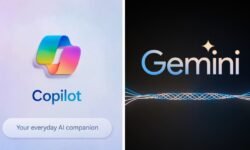
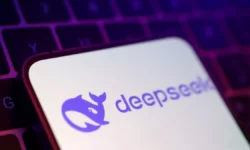
Heya i’m for the first time here. I came across this board and I in finding It really helpful & it helped me out a lot. I’m hoping to present something back and aid others like you aided me.